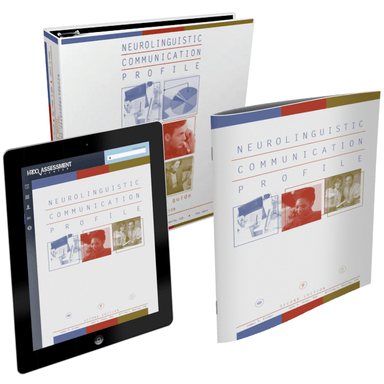
Available Online Administrators with an HRDQ Assessment Center (HAC) account may purchase Online Assessment Credits above. After checkout, login to your HAC admin account to...

The HRDQ Assessment Center delivers training that transforms your workforce with the ease of online distribution for a virtual and global audience. The portal includes 30+ online assessments addressing your soft skill training objectives, such as personality style, communication, leadership, team building, and more. Consider pairing an assessment with a course from the HRDQ Online learning portal to create a well-rounded learning experience.
Get started with HRDQ online assessments today!
Administrators with an HAC account may purchase Online Assessment Credits. After checkout, login to your HAC admin account to confirm receipt of your credits. If you have any issues, send us a message to support@hrdq.com.
Don't have a HAC admin account yet? Start by purchasing administrator access. After you check out, we'll add your account to the HAC portal. Note that account setup is not automated and takes up to one business day.
Students may self-enroll in an online version of the assessment without an administrator. This option is also excellent for organizational trainers and consultants who want to evaluate the online assessment.
To administer HRDQ online assessments to your learners, you'll need a subscription to our assessment center. Your subscription includes account setup, training, and a bundle of services to ensure your training project's success. After your subscription purchase, one of our customer support team members will contact you for onboarding, or you can schedule a time with our team that fits your schedule. We'll walk you through the administrator and participant portals, help you select online assessments, explain the portal's features, and set up your first event. Assessment credits are purchased separately.
Question? Contact us by phone, email, or chat.

Available Online Administrators with an HRDQ Assessment Center (HAC) account may purchase Online Assessment Credits above. After checkout, login to your HAC admin account to...

Available Online Administrators with an HRDQ Assessment Center (HAC) account may purchase Online Assessment Credits above. After checkout, login to your HAC admin account to...

Available Online Administrators with an HRDQ Assessment Center (HAC) account may purchase Online Assessment Credits above. After checkout, login to your HAC admin account to...

Available Online Administrators with an HRDQ Assessment Center (HAC) account may purchase Online Assessment Credits above. After checkout, login to your HAC admin account to...

Available Online Administrators with an HRDQ Assessment Center (HAC) account may purchase Online Assessment Credits above. After checkout, login to your HAC admin account to...

Available Online Administrators with an HRDQ Assessment Center (HAC) account may purchase Online Assessment Credits above. After checkout, login to your HAC admin account to...

Available Online Administrators with an HRDQ Assessment Center (HAC) account may purchase Online Assessment Credits above. After checkout, login to your HAC admin account to...

Available Online Administrators with an HRDQ Assessment Center (HAC) account may purchase Online Assessment Credits above. After checkout, login to your HAC admin account to...

Available Online Administrators with an HRDQ Assessment Center (HAC) account may purchase Online Assessment Credits above. After checkout, login to your HAC admin account to...

Available Online Administrators with an HRDQ Assessment Center (HAC) account may purchase Online Assessment Credits above. After checkout, login to your HAC admin account to...

Available Online Administrators with an HRDQ Assessment Center (HAC) account may purchase Online Assessment Credits above. After checkout, login to your HAC admin account to...

Available Online Administrators with an HRDQ Assessment Center (HAC) account may purchase Online Assessment Credits above. After checkout, login to your HAC admin account to...

Available Online Administrators with an HRDQ Assessment Center (HAC) account may purchase Online Assessment Credits above. After checkout, login to your HAC admin account to...

Available Online Administrators with an HRDQ Assessment Center (HAC) account may purchase Online Assessment Credits above. After checkout, login to your HAC admin account to...

Available Online Administrators with an HRDQ Assessment Center (HAC) account may purchase Online Assessment Credits above. After checkout, login to your HAC admin account to...

Available Online Administrators with an HRDQ Assessment Center (HAC) account may purchase Online Assessment Credits above. After checkout, login to your HAC admin account to...

Available Online Administrators with an HRDQ Assessment Center (HAC) account may purchase Online Assessment Credits above. After checkout, login to your HAC admin account to confirm receipt...

Available Online Administrators with an HRDQ Assessment Center (HAC) account may purchase Online Assessment Credits above. After checkout, login to your HAC admin account to...

Available Online Administrators with an HRDQ Assessment Center (HAC) account may purchase Online Assessment Credits above. After checkout, login to your HAC admin account to...

Available Online Administrators with an HRDQ Assessment Center (HAC) account may purchase Online Assessment Credits above. After checkout, login to your HAC admin account to...

Available Online Administrators with an HRDQ Assessment Center (HAC) account may purchase Online Assessment Credits above. After checkout, login to your HAC admin account to confirm receipt...

Available Online Administrators with an HRDQ Assessment Center (HAC) account may purchase Online Assessment Credits above. After checkout, login to your HAC admin account to...

Available Online Administrators with an HRDQ Assessment Center (HAC) account may purchase Online Assessment Credits above. After checkout, login to your HAC admin account to...

Available Online Administrators with an HRDQ Assessment Center (HAC) account may purchase Online Assessment Credits above. After checkout, login to your HAC admin account to...

Available Online Administrators with an HRDQ Assessment Center (HAC) account may purchase Online Assessment Credits above. After checkout, login to your HAC admin account to...

Available Online Administrators with an HRDQ Assessment Center (HAC) account may purchase Online Assessment Credits above. After checkout, login to your HAC admin account to...

Available Online Administrators with an HRDQ Assessment Center (HAC) account may purchase Online Assessment Credits above. After checkout, login to your HAC admin account to...

Available Online Administrators with an HRDQ Assessment Center (HAC) account may purchase Online Assessment Credits above. After checkout, login to your HAC admin account to...

Available Online Administrators with an HRDQ Assessment Center (HAC) account may purchase Online Assessment Credits above. After checkout, login to your HAC admin account to...

Become a Leader with a Legacy When most people think of the term "legacy," they often think of something one leaves behind. But what if...

Available Online Administrators with an HRDQ Assessment Center (HAC) account may purchase Online Assessment Credits above. After checkout, login to your HAC admin account to...

Available Online Administrators with an HRDQ Assessment Center (HAC) account may purchase Online Assessment Credits above. After checkout, login to your HAC admin account to...

Available Online Administrators with an HRDQ Assessment Center (HAC) account may purchase Online Assessment Credits above. After checkout, login to your HAC admin account to...

Available Online Administrators with an HRDQ Assessment Center (HAC) account may purchase Online Assessment Credits above. After checkout, login to your HAC admin account to...

Available Online Administrators with an HRDQ Assessment Center (HAC) account may purchase Online Assessment Credits above. After checkout, login to your HAC admin account to...

